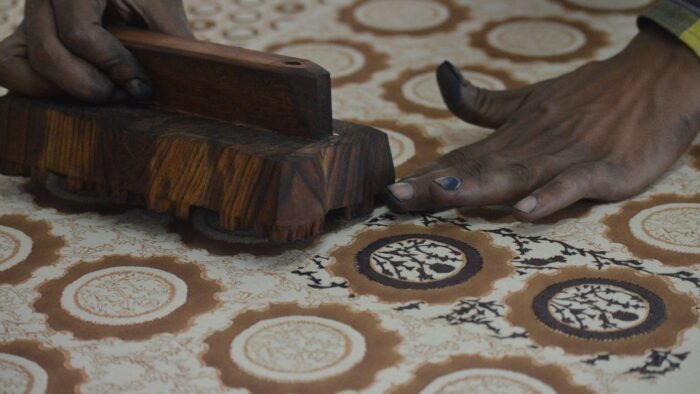Over the past few decades, there has been a myriad of conversations around what comprises a nation’s soft power, why it is important, and how it is practised. Since the term entered the academic and foreign policy lexicon in the 1980s, individuals and institutions have carried out an extensive study of countries’ soft power assets, both traditional and contemporary. Culture definitely plays an important role in determining a country’s soft power, along with its foreign policy and diplomacy, and values upheld, as Joseph Nye Jr. had identified. Expounding further on this, the Global Soft Power Index by Brand Finance also includes business & trade, governance, media & communication, and education and science as other parameters. Released in early 2020, the study ranks Indian soft power twenty-seventh globally and first in South Asia. The UK-based consulting firm also ranked India seventh globally in terms of the most valuable nation brands.
India’s cultural heritage, both tangible and intangible, has an immense offering to the world. When this is transformed into a product, service or experience, it forms the bedrock of the cultural economy. And when the culture is exported globally, it not only increases the country’s economic heft but also its soft power influence. Entrepreneurship and innovation have become increasingly important for the continuous growth of India’s creative industries, as many of them have been continuing down for centuries. Furthermore, as ideals of sustainability, handmade and conscious consumption gain foreground, Indian cultural heritage and knowledge can illuminate the way for it to become a responsible economic and soft power.
India, as the Global Hub for Crafts
The diversity of craft forms across the length and breadth of the country remains unparalleled. They vary from fine arts to puppetry, from artefacts made out of brass, wood or stones to exquisite prints on textiles. One of the most intricate forms of craftsmanship is jewellery making with stones, symbols and science all coming together to suit an individual’s choice as well as personality type. In a conversation with CSP, Tarang Arora, the creative director of Amrapali jewels, informed us how a single piece of jewellery brings together extremely skilled craftsmanship at each process of creation. The long-drawn process of intricate artwork can take up to years to deliver on one of its kind jewellery embedded in finesse and traditions. Perhaps this is what accounts for jewellery being one of the most exported luxury goods in India.
Like jewellery, textile crafts and design are also spread across the country, each state and region having its own unique craft identity. The town of Chanderi, in Madhya Pradesh, is most famously known for its silk. Similarly, Punjab for Phulkari embroidery work. Indian textile crafts, thus, contribute not only to the fashion and design sector but also towards carving a niche identity for states and regions they come from. The geographical origins also bear on the designs, motifs and colours, as in the case of Ajarakh. Practised in the sun-parched Kutch region of Gujarat, Ajrakh refers to the art of printing fabric, wherein the ‘dyes are extracted from nature and dried out in the open sky as if an offering made to the divine sun’. In this sense, textile crafts are closely related to the natural environment and local customs, but at the same time can play a powerful role in shaping global perceptions of India’s geography.
Furthermore, with the production process rooted in ideals of sustainability - of weavers and artisans’ livelihoods, in terms of the environmental impact of production, and lasting life of the product - Indian textile crafts can cater to the increasing global trend of slow and sustainable fashion. Sharing further on this, Palak Shah, the CEO of Ekaya Banaras told us about the universality of Banarsi silk and her ambition of making it an aspirational and global luxury product. Another designer and fashion entrepreneur, working with handlooms, weaver communities and bringing in innovation, is Shravvan Kumar. His designs reflect his love for traditional textile crafts on one hand and his fascination as well as a deep understanding of modern-day innovation techniques, fibre science etc. on the other.
Threads and weaves are not limited only to apparels. They also have the power to create a large canvas, adorning homes in the form of carpets. Jaipur Rugs has taken the art and skill of carpet weaving to the world, through collaborations with international designers as well as local artisans. Apart from its products, this creative enterprise also has a lot to tell about bringing the diverse crafts community from across the country to work together, ensuring socioeconomic and cultural impact happens along with design excellence.
Each state of India has its own crafts, and not just one but several forms that reflect local traditions, folklore, history and aspirations of the community. Promoting Indian crafts necessitate a ‘strong policy apparatus, entrepreneurship and businesses development.’ The country has the potential of becoming the global hub of crafts, opening avenues for not just global export of Indian artefacts and craft skills, but also inviting visitors for crafts tourism from India and the world.
Reimagining Lifestyle
The ongoing pandemic has pushed us into our homes, limiting our every-day social interactions. But this has also given us an opportunity to reimagine our lifestyles. An important aspect of this is eating healthy, with immunity boosters and superfoods becoming the buzz words. The healing and anti-bacterial goodness of turmeric has become globally popular, but India’s gastronomical heritage has much more to offer, from the emotional well-being of the cook to the utensils used in cooking. An increasing trend has been to go back to cooper, earthen pots and clay vessels, all adding to the benefits of the food consumed. Beyond the kitchen, living spaces can also be reimagined through science-inspired wall-hangings, cultural artefacts and more.
There has also been a reinvigorated attention to sources of recreation, entertainment and the idea of quality time that one spends with family and friends. What better way than DIY activities, board games and mind activities. The Science Daily reported the benefits of playing board games, including sharper thinking skills, and enhanced cognitive skills.
The tradition of Indian board games is not new, in fact, the earliest evidence depicts Shiva and Parvati playing a game of dice. In this conversation, Rohan J, founder of Ishva shares us about some ancient Indian games that have travelled far and wide such as Pallanghuzi, popular in Southeast Asia as Sunga or Congkak and in Madagascar as Mancala. And of course, we have Chess, Ludo inspired by Pachisi and Snakes and Ladders inspired by Moksha Patam as the most commonly played board games across the world. It is indeed a reflection of our civilizational prowess wherein recreation was integrated with value-based learning and cognitive development, having universal and eternal relevance.
This idea is also being revived in newer forms of games, that not only revolve around history, but also art forms, and epics. The Mantri of Hampi is one such strategy game that is inspired by the rich architectural heritage, and the opulence of the kingdom of Hampi. While strategy games are for the grown-ups, there are also interactive toolkits and games for young children. My Box of Festivals seek to impart learnings from our epics to children and Modi Toys is a diaspora initiative for furthering Indian culture and values through plush toys playing Mantras dedicated to the gods.
From children to adults, from home to historic sites, textiles crafts to fine arts, India’s culture has to offer something to everyone. It is home to infinite sources of creativity evolving with time and space, and inspirations deeply rooted in its civilizational and cultural heritage yet having universal appeal. However, it is important to not just acknowledge the Indian-origin of our wisdom and cultural offerings to the world, as in the case of Yoga and Ayurveda, but also market them as Indian-owned and strongly rooted in Indian wisdom. This necessitates robust knowledge sharing, intercultural exchanges and a collaborative approach bringing together multiple stakeholders--governmental bodies, private actors, entrepreneurs, think-tanks, diaspora communities, and cultural practitioners--for the common idea of familiarizing the global community with India’s cultural assets. These assets, when transformed into economically valuable enterprises and effective tools of public diplomacy can lead to India’s rise as super soft power.
Feature image: Ajarakh crafts in Kutch, Gujarat by Vraj Bhoomi.





